How to Plant Lawn Grass to Get a Good Lawn
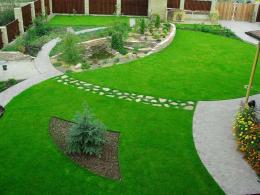
Well-groomed lawn is an integral part of our idea of a well-equipped yard, because it is the best decoration of the site and an excellent backdrop for ornamental bushes and individual trees. But in order to create such a lawn, you need to know how to plant lawn grass correctly.
Content:
Sowing time
It is best to plant a lawn in the spring, in mid-April, or in the summer, at the end of August. First you need to prepare the basis for sowing the lawn mixture, for which you should dig the ground to a depth of about 30 cm, while choosing weeds and leveling the ground using a lawn roller. Compost mixed with sand and peat, sifted through a mesh, should be poured on top of the compacted earth, the layer of which should be approximately 10 cm.
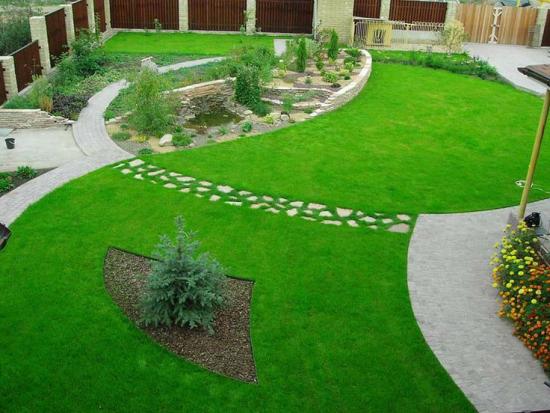
About a week before planting lawn grass, the soil must be fertilized by scattering a mixture of nitrogen, phosphorus and potassium over its surface, and leveling the soil with a rake. To plant, you need to wait for dry, windless weather. To sow a large area of lawn, it is advisable to use seeders; small areas can be sowed manually.
Seeding rate
The standard seeding rate for a regular lawn is fifty grams per square meter. To ensure more uniform sowing, the lawn mixture must be mixed in equal proportions with sand.The sowing depth for lawn grass is usually from one to one and a half centimeters. To prevent the seeds from being carried away by the wind, they need to be sprinkled with peat (a layer of about 1 cm) and lightly rolled.
Watering
A very important point in arranging a lawn is watering. Immediately after sowing it must be watered using drip method or sprinkling method. This must be done very carefully so as not to wash the seeds from the soil. Further, when the lawn begins to sprout and turf begins to form, the lawn should not be allowed to dry out.
On a note
When the lawn grass begins to rise, weeds are sure to sprout. This could be agaric, quinoa, shepherd's purse, and so on. Their seeds can lie at different depths in the soil for a long time until you stir it up and raise the layer higher. You shouldn’t worry about this at all, because in the future you will have to mow the lawn, and annual grasses don’t like this and will die out over time.
Cutting height
The density of the lawn, and its generally presentable appearance, greatly depend on the regularity of mowing. First of all, make sure that the knives are sharp. Otherwise, the ends of the mown grass will be chewed and take on a rusty tint. The same effect will occur if you cut grass that is not dry after watering, rain or dew.

It is also necessary to maintain the cutting height. The first cutting after sowing the seeds is done quite high - about 6 cm. Further cutting is carried out depending on the type of lawn:
- height of ground lawn – 3 cm;
- the height of an ordinary lawn is 5 cm.
You should not place the knives lower, as you will weaken the plants and they will not have enough nutrients accumulated through photosynthesis to form roots.If in the summer season you set the blades higher, for example, for an ordinary lawn above 6 cm, then the broad-leaved types of grass will begin to choke out the narrow-leaved ones.
The most common lawn mowing mistakes made by new gardeners are: irregular mowing or cutting too low, almost bare. Such cuttings are very harmful, as lawn grasses quickly weaken and bryozoans grow in their place, daisies or mosses. The frequency of cutting depends on humidity, soil nutrition and, of course, the time of year.
Usually cut at least once a week. And for good – if the required height is exceeded by 1.5 cm.
During your absence (for example, a business trip or vacation), the grass can grow very tall. You should not cut off the entire height at once. It is necessary to first trim the tops, and after three days mow them to the required height.
In autumn and spring, the lawn is cut a little higher - 1 cm above the recommended height.
It is better not to collect the cut grass in the lawn mower hopper in the fall, but to leave it directly on the lawn. The remains of the mown grass will decompose by spring, and this will be a good organic feed for your plants.
Care
Lawn care requires fertilizing and mulching. For fertilizing, it is better to choose complex fertilizers, like Kemira. It is also good to spray with WMD and humates. Feeding is stopped in August.
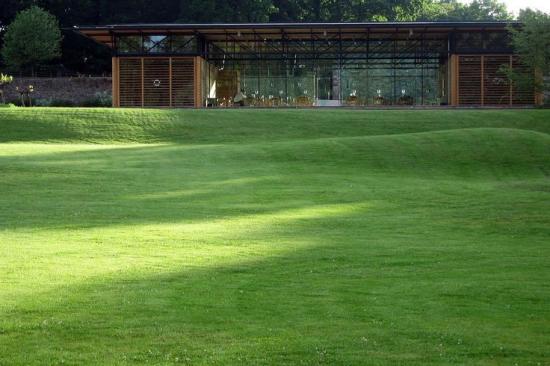
Mulching is necessary to level depressions and voids, improve the growth of side shoots, increase the thickness of the nutrient layer of soil, and improve the structure of the soil. The following mixtures are prepared depending on the composition of the soil:
- for clay soils – 2 parts turf humus (loam), 1 part rotted compost or peat, 4 parts coarse sand;
- for loamy soils – 4 parts turf humus (loam), 1 part rotted compost or peat, 2 parts coarse sand;
- for sandy ones - 4 parts turf humus (loam), 2 parts rotted compost or peat, 1 part coarse sand.
So, to get a well-maintained lawn, choose a good seed mix, prepare the soil and sow. Further care for the new lawn is not difficult. But remember that he needs regular haircuts, otherwise he will look a little dull.





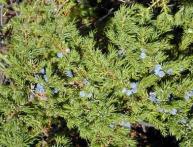




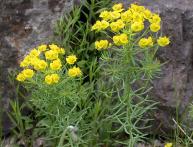
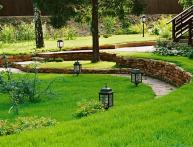
Comments
Thanks for the advice. I was just planning on doing some landscaping this spring. True, it turns out that I was a little late with planting grass for the lawn...
It is my dream to plant such a lawn. But then you need to remove half the garden and not plant at all. Unfortunately, most of us do not have enough land for such beauty. It turns out to be either a lawn or a harvest!
Why do you have to sacrifice your garden? A lawn can be laid out in the garden under the trees, dividing the garden with decorative paths. And the paths in the yard themselves can be decorated with lawn grass.
We studied the recommendations before making the lawn and it turned out very well. It is important to compact the soil after sowing - this is the basis for further successful care of the grass.